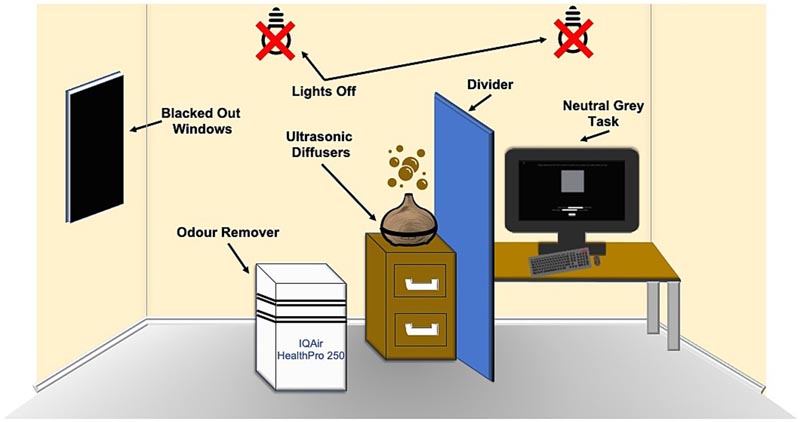Our five senses bombard us with environmental information 24 hours a day, 7 days a week. One way our brain makes sense of this abundance of information is by combining information from two or more senses, such as between smells and the softness of textures, tone, color, and musical dimensions. This sensory integration also causes us to associate higher temperatures with warmer colors, lower sound pitches with less elevated positions, and colors with the taste of particular foods (for example, the taste of oranges with the color of the same name).
Now, a study published in Frontiers in Psychology has experimentally shown that these unconscious associations "cross" with our sense of smell can affect our perception of colors.
"Here we show that the presence of different odors influences how humans perceive color," said lead author Dr Ryan Ward, a senior lecturer at Liverpool John Moores University in Liverpool, UK.
Private room of senses
Unconscious associations with smell can distort the perception of colors.
Ward and colleagues tested the existence and strength of odor-color associations in 24 adult women and men between 20 and 57 years of age. Participants sat in front of a screen in a room free of unwanted sensory stimuli for the duration of the experiments. They did not use deodorants or perfumes and none reported being color blind or having smell problems.
All ambient odors in the isolation room were removed with an air purifier for four minutes. Then, one of the six odors (randomly chosen from caramel, cherry, coffee, lemon and mint, plus odorless water as a control) was delivered into the room with an ultrasonic diffuser for five minutes.
“In a previous study, we had shown that the smell of caramel commonly constitutes an intermodal association with dark brown and yellow, as does coffee with dark brown and red, cherry with pink, red and purple, mint with green and blue, and lemon with yellow, green and pink,” Ward explained.
Participants were presented with a screen showing a square filled with a random color (from an infinite range) and were invited to manually adjust two sliders, one from yellow to blue and one from green to red, to change their color to neutral. grey. Once the final choice was recorded, the procedure was repeated until all odors were presented five times.

Overcompensation of unconscious associations
The results showed that participants had a weak but significant tendency to adjust one or both sliders too far from neutral gray. For example, when presented with the smell of coffee, they mistakenly perceived "gray" to be more of a reddish-brown color than a true neutral gray. Likewise, when faced with the smell of candy, they mistakenly perceived a color enriched in blue as gray. The presence of the odor predictably distorted participants’ color perception.
One exception was when the mint odor was presented : here, participants’ choice of tone was different from the typical cross-modal association demonstrated for the other odors. As expected, participants’ selection also corresponded to true gray when presented with the neutral scent of water.
"These results show that gray perception tended toward its anticipated cross-modal correspondences for four of five aromas, namely lemon, caramel, cherry and coffee," Ward said.
"This ’overcompensation’ suggests that the role of cross-modal associations in processing sensory information is strong enough to influence how we perceive information from different senses, here between smells and colors."
Questions remain
The researchers emphasize the need to investigate the extent of these cross-modal associations between odors and colors.
“We need to know to what extent odors influence color perception. For example, is the effect shown here still present for odors that are encountered less frequently or even for odors that are encountered for the first time? Ward said.
Conclusion The results of this study suggest that the presence of an odor can bias an observer’s decision about what their perceived version of a neutral gray is. That is, the hue angles relative to the control stimuli of all odors point toward warm colors. Pitch angles for four out of five of our odors were also found to have a significantly different mean direction from the control and all odors are not located in the same place in the CIELAB color range as each other. Which indicates that the presence of some odors induces a shift of the perceived neutral gray point towards warmer colors and that four out of five odors move towards their respective odor-color correspondences , further suggesting a small but systematic effect of the presence from Smells in human color perception. |















